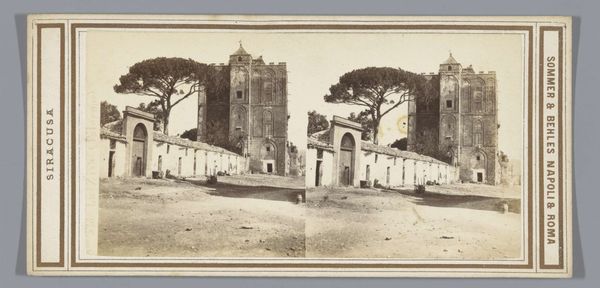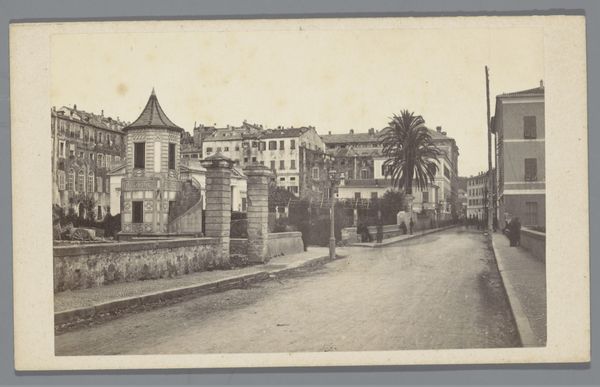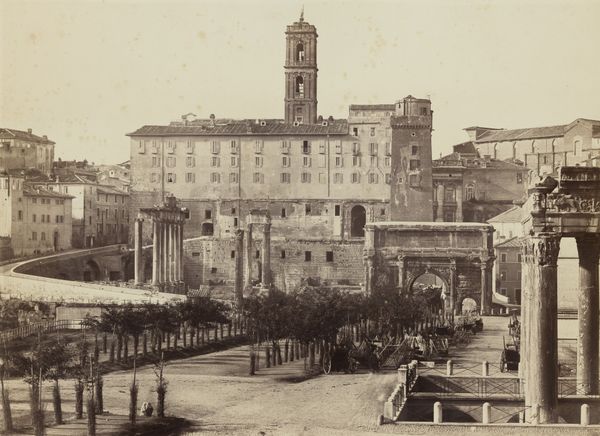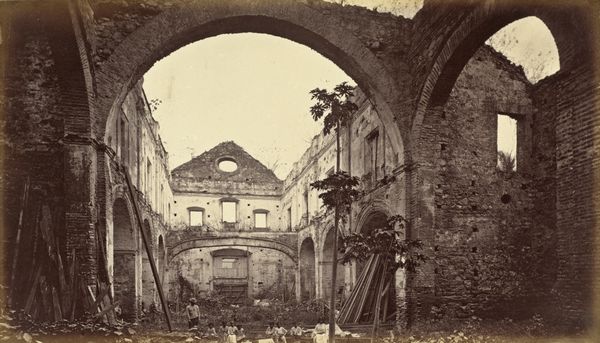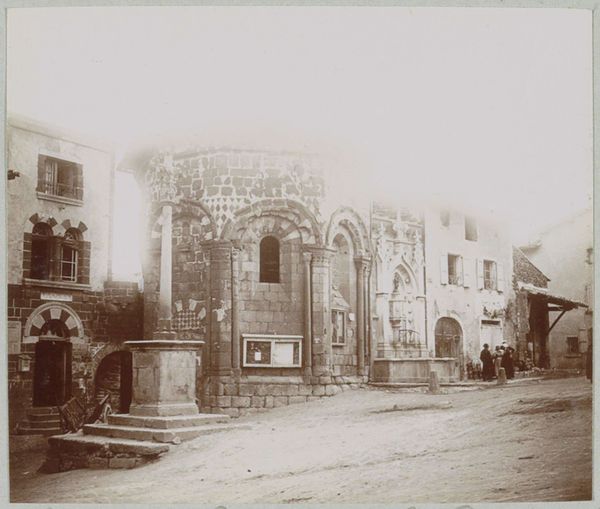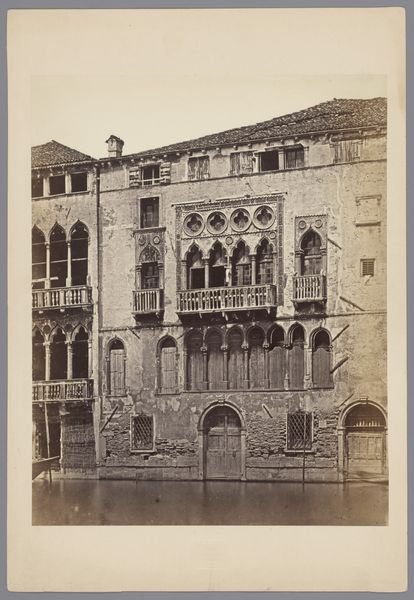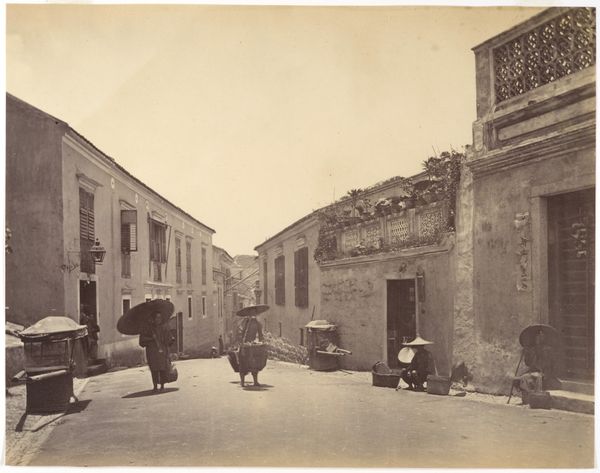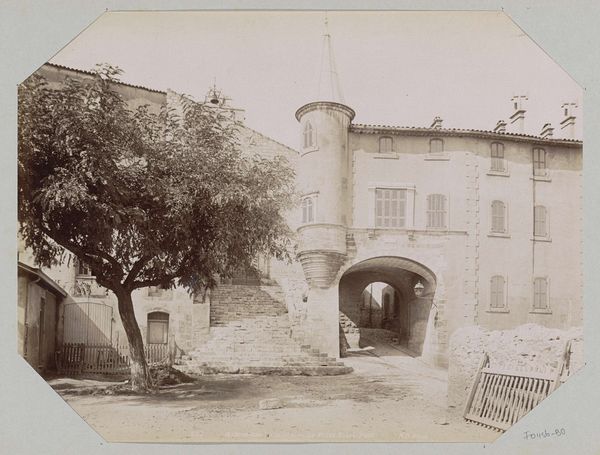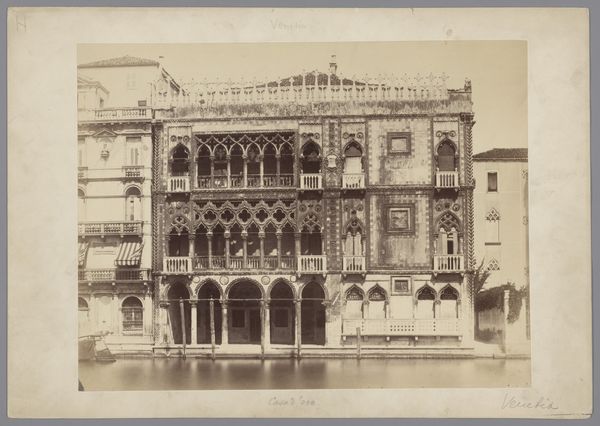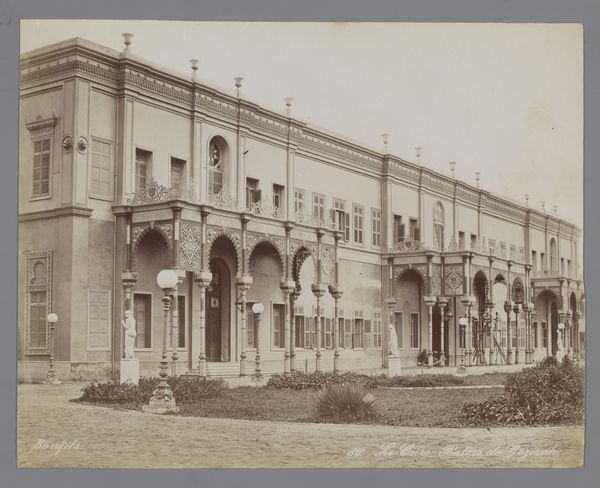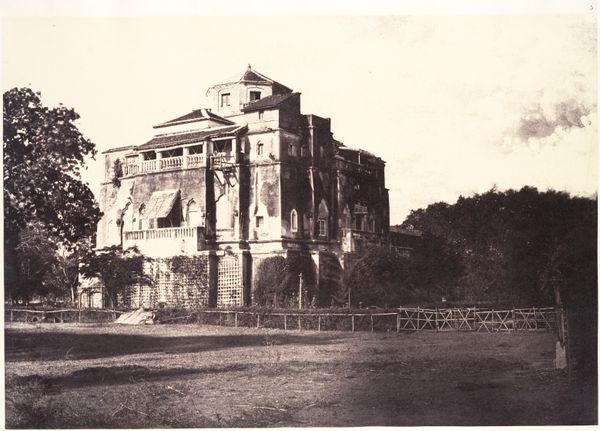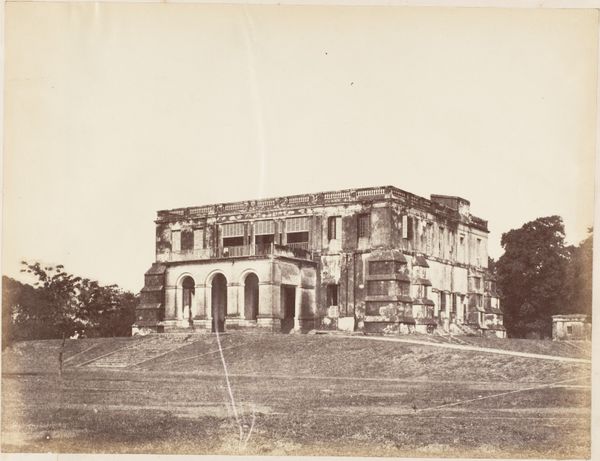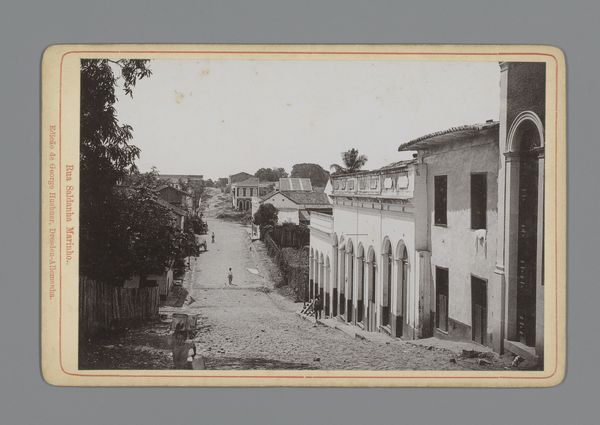
photography, gelatin-silver-print
#
16_19th-century
#
landscape
#
photography
#
gelatin-silver-print
#
cityscape
#
watercolor
#
realism
Dimensions: height 196 mm, width 253 mm
Copyright: Rijks Museum: Open Domain
Editor: So, here we have Giorgio Sommer’s photograph, “Gezicht op La Zisa te Palermo, Sicilië,” a gelatin silver print from somewhere between 1857 and 1914. It gives a stark view of the palace. It's incredible to think of this structure having such a long history even before the photograph was taken! What story do you think this photograph tells about Palermo's past? Curator: That’s a great observation. This photograph is more than just a depiction of a building. Consider the layers of history embedded here. The Zisa palace itself represents a particular moment of Arab-Norman culture in Sicily. Sommer’s choice to photograph it, likely for the burgeoning tourist industry, presents another layer. What do you think that says about how Palermo wanted to present itself to the world at that time? Editor: I guess it suggests Palermo was trying to capitalize on its exotic history. The fact that this photo probably ended up in albums of European tourists gives a sense of that, right? Were there other intentions too? Curator: Absolutely. The photographic medium itself was rapidly evolving and becoming accessible, so it marks a shift in the accessibility of imagery. The albumen print becomes a tool for documenting and distributing images of architectural achievements, landscapes and cultures – and solidifies views through widespread repetition. Did this influence later architectural styles? Did it solidify particular narratives of Sicilian culture that resonate to this day? Editor: That's fascinating. I hadn't thought about how the photograph itself shaped perceptions of the place. So, it’s not just a passive record. Curator: Precisely! These photographs become agents in the construction of historical narratives and power dynamics. This photo presents not just Palermo but how the world wanted to *see* Palermo. Think about what other historical forces influenced what was deemed important and beautiful during the period. Editor: Wow, I’ll never look at an old photograph the same way again. It’s like uncovering a hidden conversation between the past and the present.
Comments
No comments
Be the first to comment and join the conversation on the ultimate creative platform.
